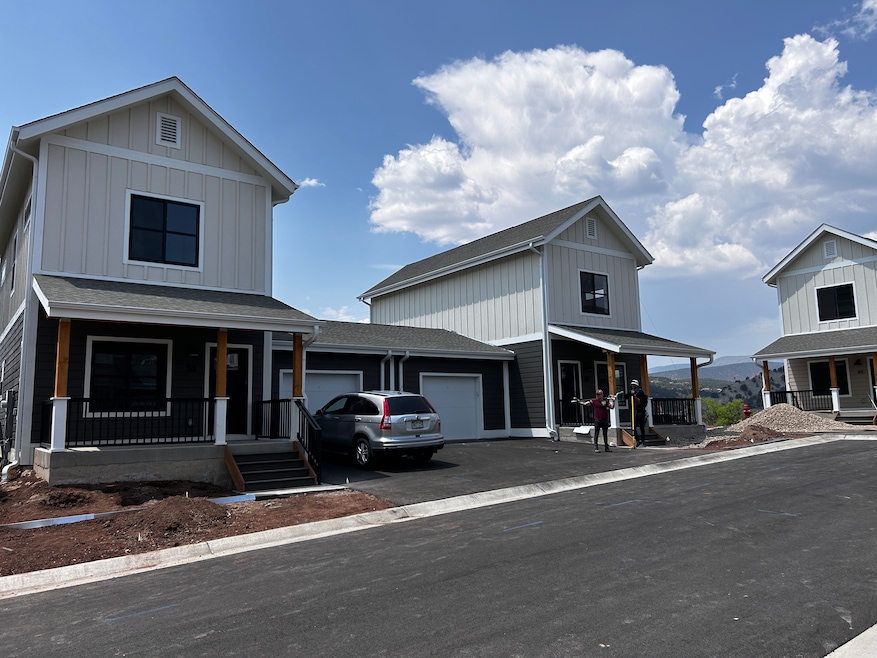Amid a national housing crisis and skilled worker shortage in the construction industry, Habitat for Humanity of Colorado was awarded $7.3 million from Proposition 123 funds to build 97 homes statewide.
Karen Kallenberg, executive director of Habitat for Humanity of Colorado, told Homes.com that this year’s funds were slightly lower than last year's, but the pipeline for producing homes remains undeterred. Proposition 123, passed in 2022, allows the state to set aside a portion of existing tax revenue for affordable housing initiatives.
“Habitat for Humanity across the state is really trying to double our production and really increase opportunities for homeownership,” Kallenberg said.
Kallenberg said the funding will be distributed in January to 23 locations stretching from Cortez to Denver. Most of the organization’s projects are along and west of Interstate 25.
They are building duplexes, triplexes, quads, and single-family homes, she said. “Typically, what you'll see that we build are single-family attached and detached" homes.
What is the average cost to build a Habitat for Humanity home? It's $400,000, Kallenberg said. “Habitat for Humanity sells the homes with an affordable mortgage for an average of $300,000.”
Skilled labor shortage affects construction costs
In recent years, Kallenberg stated, the skilled labor shortage has impacted the organization’s ability to construct homes.
According to the Home Builders Institute’s fall report, there are 3.3 million payroll residential construction workers in the United States, reflecting a decrease of 26,100 jobs over the past year.
That is a challenge that communities across Colorado, especially those in rural and resort areas, face, Kallenberg said.
The National Association of Home Builders' economics team quantifies the size and impact of the skilled labor shortage at $10.8 billion per year: $2.7 billion for longer construction times and increased carrying costs, and $8.1 billion to lost construction (19,000 homes).
“The costs are significantly higher and that comes from land cost as well as construction materials,” she said. "I think that's probably the most significant … If it's costing us $400,000 and we're selling the home for $300,000, the gap between [what] it's costing us and that subsidy we can sell it for is increasing.”
That’s why the state funding is so important to the organization, she said. “That $7.3 million for those 97 units [is] going to be about $70,000 per unit, so that's helping with what we're seeing in terms of the high construction cost.”
Modular housing helps with production issues
To combat issues with production timing, Kallenberg said, the organization is using modular housing in communities across the state.
“That really has helped with the challenges with skilled labor or even volunteer labor and really helping to increase production,” she said.
She explained that while houses are being built faster, Habitat hasn’t yet seen the cost efficiency.
“We have a whole project in Eagle where we partner with Fading West,” a modular home builder, Kallenberg said.
She pointed to Flat Iron Habitat for Humanity in the Boulder Valley area, which is also building modular homes.
“They're beautiful homes, and people are really excited for them,” Kallenberg said.
The communities and people Habitat serves
Habitat for Humanity of Colorado aids households earning less than 100% of the area median income.
But the average in Colorado is 68%, Kallenberg said, adding that the organization typically serves firefighters, government employees, nurse's aides and retail managers. “So, people that traditionally homeownership has been out of reach [for] because of the low affordable housing stock that we have, as well as just the high cost of the housing that's out there in Colorado.”
The Habitat program offers homebuyers the opportunity to give back by working on their own home, assisting with other builds or by simply volunteering hours to show their partnership and engagement.
Across the nation, Habitat for Humanity will celebrate its 50th anniversary in 2026.

